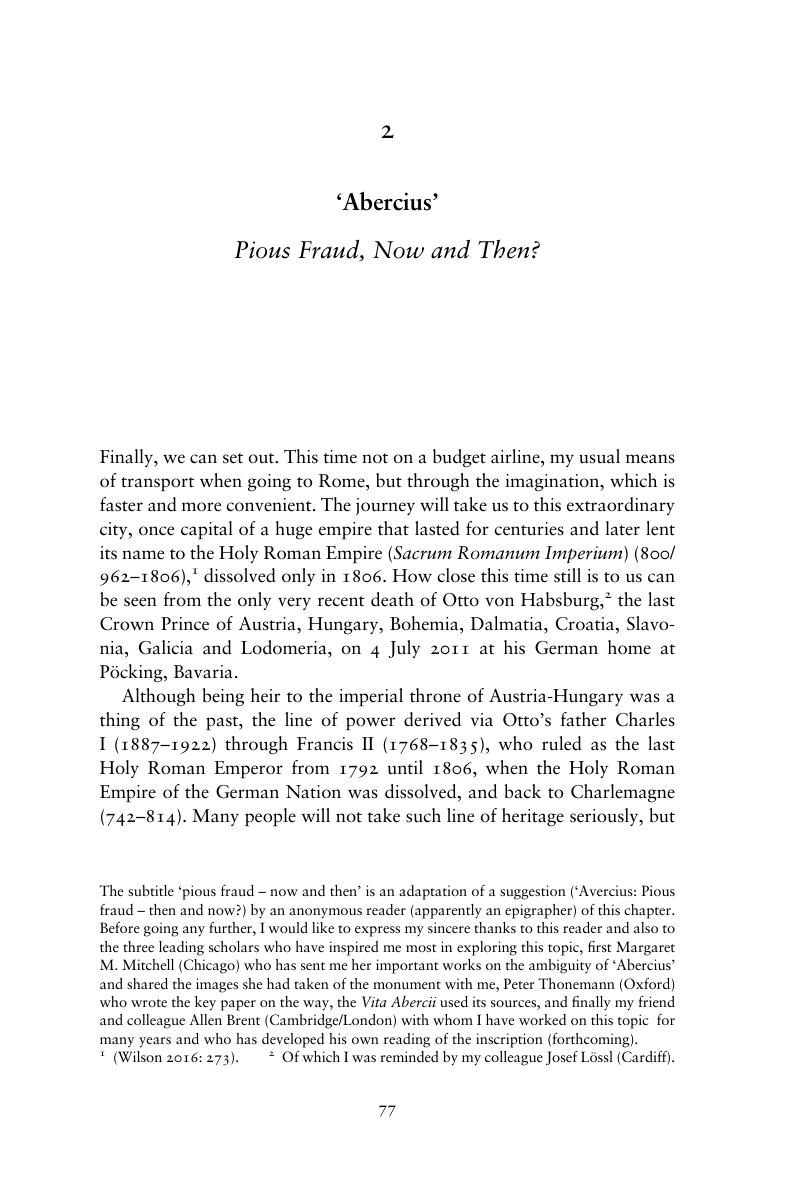2 - ‘Abercius’
Pious Fraud, Now and Then?
Published online by Cambridge University Press: 04 March 2019
Summary

- Type
- Chapter
- Information
- Writing the History of Early ChristianityFrom Reception to Retrospection, pp. 77 - 161Publisher: Cambridge University PressPrint publication year: 2019



